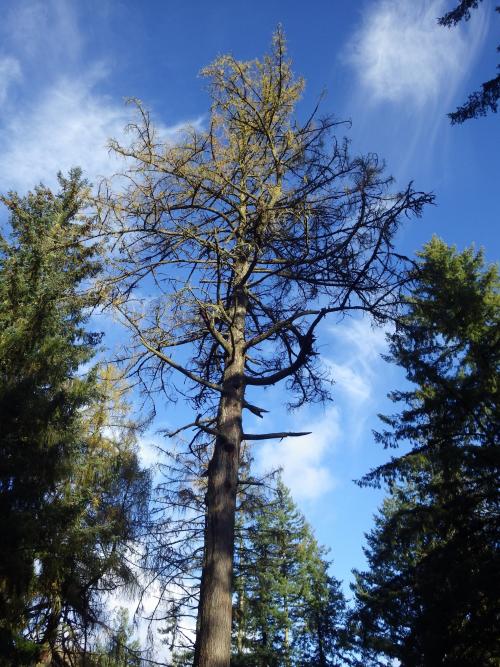
We are delighted that Dr Katy Hayden from the Royal Botanic Garden together with the Plant Health Centre, have shared this example of the complexities and difficult decisions needed when protecting our environment with us.
Heritage gardens play an important role in plant conservation. They house collections gathered over decades or even hundreds of years, including varieties of plants that may be overlooked elsewhere, fostering heirloom varieties and preserving biological diversity that is the raw material of adaptation. As well as being beautiful and tranquil sites of cultural heritage, as many of you will know that have already visited them, they are also treasure troves of biological diversity.
Arduaine Gardens shows us that tough choices can be necessary and important to preserve these collections and the surrounding environment. In autumn, Arduaine began felling the approximately 900 Japanese larch trees (Larix kaempferi) within the garden’s shelter belt. Among these trees was the first finding of the invasive pathogen Phytophthora ramorum in Scotland, and despite selective felling of infected trees since then, and continued efforts by the Forestry Commission Scotland to fell larch wherever infections occur, the disease has spread.
Until 2009, Phytophthora ramorum was known as a disease of hardwoods and ornamental plants. Something shifted, however, and the pathogen is now an extremely effective pathogen on larch, producing many more infectious spores on larch than on any other host species, and the Japanese larch is the most susceptible species. This most likely means that epidemics in larch trees are more infectious than in other hosts, and may explain why the disease is continuing to expand in Scotland, even into areas that are less favourable for the pathogen. Until last year, the only known occurrences on larch were in the British Isles, but it has since spread to Brittany.
Because the formation of spores (sporulation potential) is so great on larch, felling all Japanese larch in the shelterbelt at Arduaine makes good sense. Larch can act as an amplifier, catching spores and then producing more, which can go on to infect other species. Aside from the larch themselves there are incredible Rhododendron collections in the garden, oaks in the surrounding woodlands, and perhaps other species that would become hosts in the presence of a high enough spore presence. By taking this seemingly drastic step, we can protect the garden and its collections and are helping to lessen the impact of this invasive pathogen, ultimately protecting our wider environment.
If we understand the risks and consequences, we can take the necessary steps to safeguard our gardens and environments when needed.
Dr Katy Hayden, Royal Botanic Garden Edinburgh